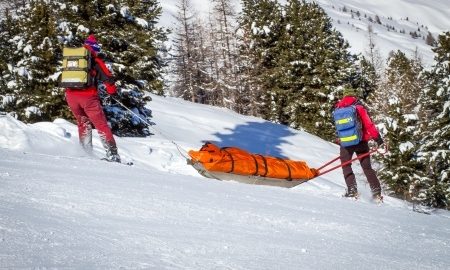New Jersey Doctor in Ski Crash: A Case Report

In February 2014, Dr. Mike Solomonov, an anesthesiologist and pain management physician from Cedar Knolls, New Jersey, was enjoying a skiing holiday in Italy with his family. A mountainside crash left him with injuries including a partial tear of the ACL, a strain of the MCL, a tear in the meniscus cartilage of the knee, as well as a tibia (shin bone) with a hairline fracture. As a trained physician, the 50-year-old Solomonov knew his injuries were not medical emergencies. He didn’t want to spoil the rest of the vacation for his wife Viktoriya, 13-year-old daughter, and 9-year-old son, so he simply stayed off the slopes and treated his injured knee with ice, elevation, and bracing until returning to the United States.
Back home, Solomonov received conservative treatment. The fluid was drained from the injured knee and he received steroid injections locally to control the swelling and inflammation. To help the torn ligaments and cartilage heal, he was prescribed physical therapy. This is the standard treatment plan that thousands of people receive after injuries sustained during recreational sports activities. Because the tears were partial, Solomonov knew surgery was not the best option. At this stage, he was confident that diligent physical therapy would help him regain stability and strength in his knee and he would back on his skis and bike in 6-8 weeks.
When the initial physical therapy program and home exercises did not result in the expected improvement, Solomonov switched therapists and was able to gain some improvement in knee stability. With time, however, he realized that his knee was far from healed. Walking short distances promptly resulted in knee pain and swelling. For the very active physician who was used to cycling, skiing, and running regularly, this was unacceptable. Walking the dog and getting through his appointments for the day was just about all he could do. Repeat fluid drainage and steroid shots were not helping either. Panic started to set in.
Solomonov’s wife, Viktoriya, was worried. “Exercise was his way of dealing with work stress,” she says. Twelve months after the crash, the Solomonovs were determined to find an answer that would allow Mike to return to his prior physical activities. A surgeon discussed tendon grafting to replace the torn ligaments, but Solomonov knew that such procedures are not always successful for partial tears. In addition, the rehabilitation is extensive and arthritis is a common complication.
To explore other options for treatment, Solomonov attended a regenerative medicine conference in September 2015 and became interested in the minimally invasive technique called platelet-rich plasma (PRP) therapy. This evolving medical therapy uses the patient’s own blood to help repair damaged ligaments, cartilage, tendons, and muscle. Solomonov had used techniques such as PRP in some of his own patients and knew that when performed by a properly trained physician, the complication rate was low. At the conference, Solomonov learned that the latest advances in these techniques were allowing them to be offered as a standard of care for more and more injuries. It sounded like a promising option.
Solomonov underwent the relatively simple procedure in February 2016, nearly two years after the accident. Two weeks later, with no additional therapy or prolonged rehabilitation, Solomonov was able to ride his mountain bike again. One month later, he was back to doing 30-mile rides with no knee pain or swelling.
Back to his normal life, Solomonov is reflective. His confidence in stem cell therapy and PRP treatment has been reinforced by firsthand experience, and he is more comfortable offering it to his patients. “PRP therapy offers people a chance to heal without drugs or surgical risks,” he says.
Source: https://www.tapinto.net/towns/randolph/sections/advertorial/articles/when-this-randolph-nj-doctor-became-the-patient


